Matador Network's Blog, page 1222
November 9, 2018
No-wash Unbound Merino shirt review

Overpacking may be one of my worst qualities. As a Marine, my pack during field exercises routinely weighed five to 10 pounds more than others. Now as a travel writer — another job where you’d think light packing would be an essential skill — I check a bag for any trip longer than a weekend.
It’s not that I pack 100 different outfits, necessarily. It’s just that I don’t like wasting travel time doing laundry, and I never want to be somewhere and think, “I wish I hadn’t left that at home!” When you need a new shirt, new socks, and a new set of gym clothes every day, you’ve filled up two-thirds of your suitcase before you even start thinking about dinner clothes.
The solution, then, would be finding a piece of utility clothing — a t-shirt or gym attire — you could pack one of for a trip. This seems counter-intuitive and gross since that’s usually the stuff that gets dirtiest, which is why I was so intrigued when I got a pitch from a company called Unbound Merino for “the only shirt you’ll ever need.”
Unbound Merino is one of many companies that designs clothing that theoretically never needs to be washed. Ably Apparel makes some. As does Mack Weldon. I’d heard about them from frequent-traveling friends, offering advice on how to lighten my load. But the $65 price tag scared me away.
But Unbound Merino offered me a shot to try it free, sending me a snazzy blue crew-neck t-shirt and a pair of black socks. Which I took — with only a couple of backup shirts, just in case — on a 12-day press-trip tour of the Carolinas and Northeast Indiana.
So how do no-wash clothes work?

Photo: Unbound Merino
My biggest question about these magical no-wash clothes was how, exactly, they keep from getting dirty. The fabrics vary by manufacturer, but Unbound Merino uses merino wool. It’s a thin-strand wool from Australian and New Zealand sheep that apparently wicks away moisture so that odor-causing bacteria have nowhere to grow. No bacteria, no funky clothes.
The wool keeps you cool because it’s full of tiny air pockets that relax when your body heat rises, releasing hot air away from your skin. This keeps you cool on hot days or while exercising and is popular among skiers, snowboarders, and other winter athletes.
Armed with this research, I left decked out for my first of many days in a blue crew neck for the Fall For Greenville festival in Greenville, South Carolina. I’d been selected as a judge, tasked to sample 49 dishes in 24 hours. As one who is physically incapable of eating a bowl of pasta without the necessity for dry cleaning, it seemed like this experiment might not last long.
Inevitably, when I tried a bacon-avocado-cheeseburger sample, a good portion of every ingredient landed on the front of my shirt. But unlike absorbing into the fabric, the errant bacon grease just beaded up like water on a duck’s back and slid right off. Ten minutes later, you’d have never known I ate like an eight-year-old.
The next morning, when I put on my shirt for day two of judging, it reeked of neither meat nor sweat, and though the next afternoon had me walking miles through the crowded festival in fall heat, by Sunday brunch the shirt and socks were still smelling sweet.
I spent Sunday at a friend’s house grilling meat and smoking cigars. And though my jeans now smelled like an episode of Mad Men, the shirt smelled perfectly politically correct.
The next morning I left for Asheville, North Carolina, where I met up with an old friend from college for a week of drinking beer and playing in the mountains.
“Dude, how do I smell?” I asked as he picked me up from the airport. He looked confused.
“Fine?” he said. “Did you wear a special cologne for me or something?”
“No, but I’ve been wearing this shirt for five days. Does it smell yet?” He sneered, appropriately. I explained the experiment.
“That’s nasty,” he said. “Although I will say, I wouldn’t have noticed. I’ll let you know if you start smelling.”
The shirts stay clean… to a point.

Photo: Unbound Merino
In Asheville, I learned the shirt’s limits. After riding a motorized mountain bike in a torrential downpour through the mud of the Biltmore estate, I was soaked in wet dirt. Even though I’d worn a jacket, the Unbound Merino shirt was saturated. And glittering.
Apparently, the hills of western North Carolina are filled with mica, which blended with the mud and made me and my friend look like we’d spent the afternoon at a particularly filthy Kesha concert.
When I returned to my hotel, my shower became a dirty glitter bomb as I spent a good 10 minutes trying to get the mica out of the shirt. After doing the best I could, I hung it in the hotel bathroom and hoped it would be dry the following day.
Though the care instructions say to air dry it, by the next morning it was still soaked. This was a little disappointing as I was now forced to break my string of consecutive days in the shirt. It would be another day before I could beat the remaining glitter and dust off the shirt and wear it again.
“You still look like you spend the night at a strip club,” my friend in Asheville told me when he picked me up for lunch. “But you don’t smell.”
This was also the point where I realized the merino wool socks smelled like a middle school locker room. It’s harder to wick away moisture when the socks are surrounded by shoes, I surmised. So I had to retire them a week into the experiment.
Even smoky bars with clumsy patrons don’t stop the one-shirt party.
A couple of days later in Ft. Wayne, Indiana, I decided to really put the shirt to the test as I was nearing the end of the 12-day voyage. I wore the shirt to a heavy metal show at a dive bar where there may have been more cigarette smoke on the outdoor patio than oxygen. I may have also had a domestic beer spilt on me, followed by a whiskey shot, followed by another to-be-identified liquid. I woke up the next day fully expecting my blue crew neck to smell like a used bar mat. Surprisingly, it was fine.
That night I took the shirt for its final test: a long, sweaty workout. Typically, during a 60-minute exercise class, I soak through a dry-fit shirt by the end of my warmup. And while I could definitely feel sweat getting into the wool, making it uncomfortably itchy, it never got even close to drenched. Eleven days into the trip, the sweat beaded up and rolled off like the bacon grease night one.
I hung it up to dry for the night, fully planning to wear it on the plane home. Worst case scenario, I ended up on Passenger Shaming.
Bolstered by a few beers at the Ft. Wayne airport Sam Adams Taphouse, I sat down next to the mild-mannered looking man next to me on my flight home and promptly greeted him by saying, “Just FYI, I’ve been wearing this shirt for two weeks. If you wanna get up and move, I won’t be offended.”
He gave me a look like I’d just told him I was going to steal his in-flight magazine, not really all that bothered but wondering why I felt the need to tell him.
“Well,” he nodded without much intonation. “Appreciate you telling me. Any reason?”
“It’s for a story,” I said, explaining my job and why I was doing this. “Honestly, I’m excited to wear something else tomorrow.”
He seemed fascinated and looked up Unbound Merino on his phone. He told me he traveled a lot for business and thought this might help him pack more casual clothes when he’s gone. No idea if he ever made a purchase, but the shirt clearly has an appeal.
I took my blue crew neck off that night, put it in my dry cleaning bag, and haven’t looked at it since. Not that I don’t like the shirt, it fit well and was exceedingly comfortable. But it’s like eating pizza every day for a week, after that you don’t want to see it for a while.
The shirts aren’t cheap, but they are worth it if you like packing light and don’t mind wearing the same thing every day. And they keep their claim of staying clean unless you take them on rainy-day dirt bike rides. I’ll hold onto mine for times when packing as little as I can is crucial, though I still like the freedom of choice when I’m traveling. That said if you hate checking bags more than you hate repetitive wardrobes, these shirts are your new favorite item. But maybe get it in more than one color. 

More like this: The best gifts for the outdoor lover in your life are on sale at REI right now
The post I wore the same shirt for an entire 12-day trip. And it magically stayed clean. appeared first on Matador Network.

Best ski trails in US national parks

Many of America’s national parks are at their best in the winter. At some of them, a magical layer of snow adorns the scenery and serene trails are have far fewer — if any — people. One of the best ways to take in these natural winter wonderlands is on cross-country skis. While you can do so in just about any park where it snows, these nine are the cream of the crop.
Planning your epic national park cross-country journey
One reason there aren’t more skiers in these parks is that you have to pay to get in. But the biggest factor is that most people don’t think of national parks when doing they’re winter trip planning. This means you can leg-up just about everyone you know, with the added bonus of having your photos of the most popular sights look totally different from theirs. Here’s a quick rundown on how to prepare for the best skiing experience.
First, visit the National Park Foundation, the non-profit arm that supports the parks. The website has information on what else to do in the parks beyond skiing, including where to winter camp for those willing to brave the weather. The NPF is also a resource for supporting the parks and staying current on developments within them.
Next, do a rundown on your gear checklist. Skis and boots, pants and jacket, goggles and gloves. If you don’t have cross-country gear, lots of parks rent it out for reasonable prices.
Last, consider the ability of everyone in your party, remembering that while many trails listed here are loops, some are out-and-back so you can definitely call it quits before reaching the end of the line.
Crane Flat Area, Yosemite National Park, California
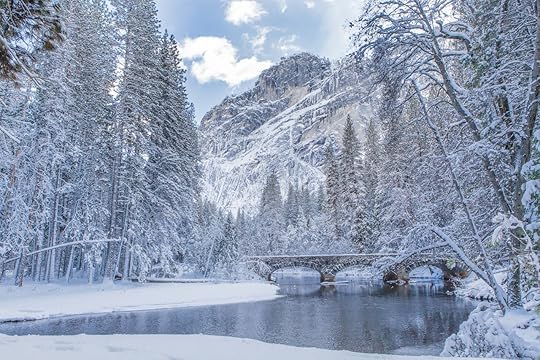
Photo: Min C. Chiu/Shutterstock
There are eight trails in the Crane Flat Area of Yosemite National Park, ranging in difficulty from quick morning warm-up to a full-day cardio excursion. If you happen to catch a good snow year, the Rockefeller Grove Trail is a gorgeous 4.5-mile round-trip jaunt through the woods to its namesake grove. The trail is challenging, but you’ll get most of the hard work done on the way in. For a long journey, the Gin Flat Loop Trail takes you three miles up to Gin Flat and rewards you with a gentle glide back down past views of towering sequoias and peaks. On the easy side, try the Crane Flat Lookout Trail, a three-mile round trip with great views of the park. You can rent cross-country skis from the Yosemite Ski & Snowboard Area.
Rim Drive, Crater Lake National Park, Oregon

Photo: Matthew Connolly/Shutterstock
If you’ve been to Crater Lake in summer, you’ve undoubtedly heard the siren call of return. A winter trip is the right way to optimize that second voyage because the crowds are far thinner and the lake and surrounding landscape look totally different. West Rim Drive, a busy thoroughfare for vehicles during the warmer months, is closed to motorized traffic during winter and becomes your best bet for taking in the park’s highlights on a pair of skis. Stop to take a photo at Discovery Point — noting how great your photo looks with that fresh powder on the hill encircled by crystal blue water. You can squeeze in up to 30 miles of cross country here, but there’s no reason to push it too far. Plenty of famed views can be seen within eight miles, making for a solid morning or afternoon session. You can rent gear in the park from the Rim Village Gift Shop.
Wild Basin Trail, Rocky Mountain National Park, Colorado

Photo: BlueBarronPhoto/Shutterstock
Rocky Mountain is another park that tends to draw a crowd in winter due to the hordes of people that fly into Denver on ski trips and the popularity of the park among backcountry skiers and snowboarders. Even so, it’s desolate compared to what you’ll find during the summer months — the perfect chance to soak in the wilderness without anyone beeping their horn behind you or flying by on the side of the trail. A 5.4-mile round-trip journey from the trailhead to the second of two waterfalls, the Wild Basin Trail gives you the chance to take in the jaw-dropping mountains of the park without having to drive over Trail Ridge Road, which is closed in winter. You’ll also cross a picturesque wooden bridge that is among the best photo ops of the trip. If it’s a clear day, you might spot some wildlife and can even plan on doing a bit of birding. The park is home to gray jay, white-tailed ptarmigans, and others. You can rent from the Teton Pines Nordic Center.
Brown Mountain Station, Acadia National Park, Maine
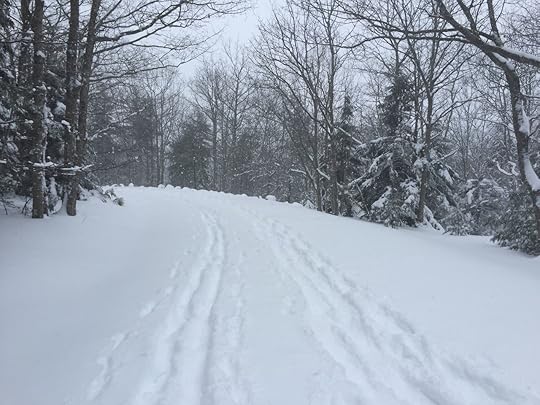
Photo: Nicole Ouellette/Shutterstock
Acadia National Park has arguably the most well-organized cross-country ski trail system of any national park. Friends of Acadia makes it super easy to plan your expedition with this comprehensive trail map. Brown Mountain Station offers two loop trails, the Hadlock Loop and the Amphitheater Loop, with a connector trail offshoot from each that takes you across the park to Eagle Lake and eventually Hulls Cove Station. The park’s non-profit arm also, along with a group of local diehards known as the Acadia Winter Trails Association, fundraise for grooming and trail maintenance. This means that while you’re dreaming of pushing your way through this stunningly beautiful park, sun poking through crystal-covered tree branches under a bluebird Maine winter sky, you can smile knowing the powder from that last Nor’easter is being packed into a nice, well-marked path just waiting for your arrival. Acadia recommends renting winter gear from Cadillac Mountain Sports.
Paradise Valley Road, Mt. Rainier National Park, Washington

Photo: Dean Pennala/Shutterstock
This high-elevation, snow-drenched winter recreation area puts you right on Mt. Rainier. Park at the Jackson Visitor Center or the Paradise Inn and make your way up the marked trail to Narada Falls. You can drive there, too, but you’ll feel much better about yourself by skiing. Another option is to head up the unplowed road and after the third switchback (see this trail map) turn right onto the cross country trail towards inspiration saddle. This part is a bit more difficult for the final 0.3-mile push. You can go another 1.5 miles further up the Mazama Ridge Route and at the trail’s end either take a left to head back to the parking lot or a right onto the Skyline Route to loop all the way around to Panorama Point. Rentals are available at the White Pass Nordic Center.
McDonald Falls, Glacier National Park, Montana
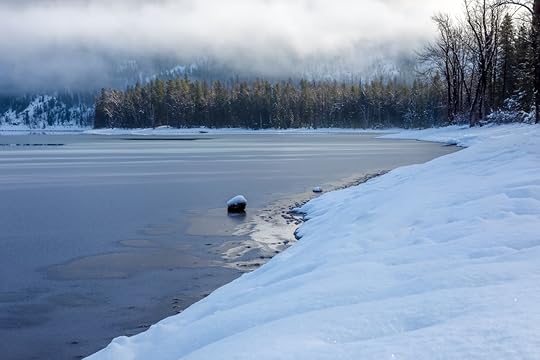
Photo: Robert Paulus/Shutterstock
Round trip, this trail is four miles of scenic bliss with a hefty dose of cardio mixed in. Depending on snow cover, you’ll spend most of that time on an unplowed, ungroomed road. Fortunately, this is a popular run, so odds are you won’t be breaking trail. Lake McDonald is to your left, and you’ll see an obvious point to turn left towards the falls, crossing over the creek and proceeding until the viewpoint. Take it a step further by looping back to the main trail and heading up to Sacred Dancing Cascades and, if you have all day, Avalanche Point. Check out the trail map from the NPS here. Rent from Glacier Cyclery & Nordic.
Death Canyon Trail, Grand Teton National Park, Wyoming

Photo: IrinaK/Shutterstock
Grand Teton is one park that conjures images of pushing through the snow on two planks, shiny mountain vistas in the background and nothing in your way but a pile of deer scat. The Death Canyon Trail packs the most peak porn into one shot though it does get a bit steep by cross-country standards — there are 730 feet of climbing involved. Despite the elevation gain, it is generally an enjoyable out-and-back excursion that is as rich in open skies and solitude as anywhere in the contiguous US. Follow the trail 2.6 miles up to the Phelps Lake Overlook and bring a picnic lunch because you’ll want to settle in for a while. The views of the lake and surrounding Tetons are tough to look away from.
Cliff Palace Loop Trail, Mesa Verde National Park, Colorado

Photo: Alexey Kamenskiy/Shutterstock
Mesa Verde, home of some of the largest Puebloan ruins in the southwest, looks completely different in winter when the rock outcroppings and forested hills are covered in snow. Add the park’s star attraction to the mix and you’re looking at the perfect setup for a day of adventure. Even if a big snowstorm just pounded the San Juans, this trail is easy to find. From the parking lot at the Chapin Mesa Archeological Museum, ski along a well-worn trail along the Cliff Palace Loop. You’re essentially skiing the main road through the park and will hit a number of awesome sights and viewpoints, highlighted by the Cliff Palace itself. The ski track is flat, and you’ll find easy pull-off stops every time there’s something of note, so keep your phone handy to snap plenty of photos. You can’t rent cross-country skis in the park, but call Slavens True Value Hardware.
Tower Ski Trails, Yellowstone National Park, Wyoming
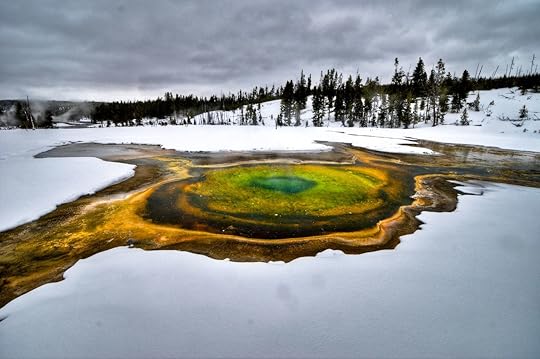
Photo: Felix Lipov/Shutterstock
Like Acadia and Yosemite, Yellowstone National Park has a well-trodden and organized series of cross-country ski trails. Park near Tower Junction and head out on the Tower Falls Trail, which within a couple miles joins with the Chittenden Loop Trail. If you’re up for a challenge, follow the loop all the way around and find yourself back on the Tower Falls Trail back towards the parking lot. Another option is to take the Lost Lake Trail past the famed Petrified Tree towards Crescent Hill and the Blacktail Plateau Trail. You can take this one nearly as far as you’re game for — just be aware that it’s an out-and-back trail and won’t loop back around. Both options here are a good workout, so bring lunch and plenty of water, and check out this trail map for exact routing. Free Heel & Wheel rents cross-country skis. 

More like this: The best US national parks to visit this winter
The post The best ski trails in US national parks appeared first on Matador Network.

REI sale for Christmas shopping

There’s no better gift than getting your loved ones into the great outdoors. And no better time to get those gifts than right now. REI wants you outside, and they’re offering 30 percent off on hundreds of items.
We got a sneak-peak at the sale and saw some screaming deals. REI has backpacks we’ve recommended this year, apparel from top brands like Arc’teryx and Smartwool, and total steals on big-ticket outdoor items. Plus, members save 20 percent off a full-priced item and an extra 20 percent off one REI Outlet item with the code GEARUP2018. Here are our top picks from REI’s Gear Up Get Out sale.
The best backpacks

Photo: REI
This year we told you you about the best backpacks, and we’re glad to see some of them marked down at REI’s sale. The Patagonian Nine Trails backpack is attractive, lightweight, breathable, and fits a hydration bladder. And it’s 30 percent off.
The best footwear
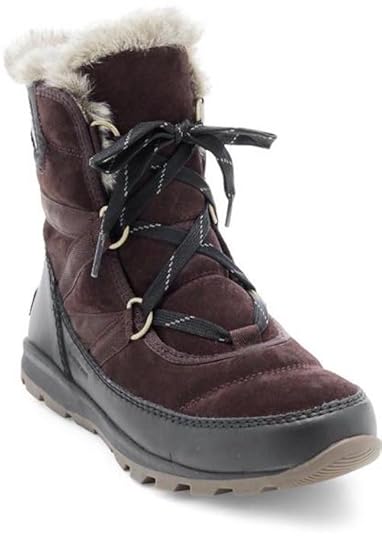
Photo: REI
You really can’t do better in snowy weather than using cozy, toasty Sorel boots, and these Sorel Women’s Tivoli boots are only $99.99, down from $135.

Photo: REI
We’re also huge fans of Bogs footwear — which you can wear in rain or snow, and which pull on incredibly easy. After a long day of skiing, you just want get those ski boots off and into something comfy as fast as possible. No laces, thank you very much. All Bogs boots are 25 percent off.
The perfect tools

Photo: REI
It’s hard to get a better gift for the serious outdoors enthusiast than a Leatherman multi-tool. The Leatherman Supertool 300 has 10 blades and comes with a leather-carrying sheet, and it’s 20 percent off.
The warmest inner layers

Photo: REI
For true warmth, there isn’t a better base layer than just about anything from Smartwool. Heading out in cold weather without it isn’t, well, smart. All of Smartwool’s 250 base layer items are incredibly warm while still being lightweight and flexible. Now’s the time to stock up since they’re 30 percent off.

Photo: REI
There isn’t a higher-quality outdoor brand out there than Arc’teryx. Arc’teryx products look good and perform well, and have done so — looking good and performing well — for years. Trust us on that one, and get this Arc’teryx Atom LT insulated hoodie for 25 percent off.
Stylish mid-layers

Photo: REI
You can’t give a more practical and appreciated gift than a classic Patagonia Fjord Flannel shirt that can go straight from the ski hill to après — and look on point in both places.

Photo: REI
They started with yoga attire and have branched out into stylish streetwear. This prAna Brandie sweater comes in bone, charcoal, and wood, and will keep you extra toasty.
The best-looking outer layers
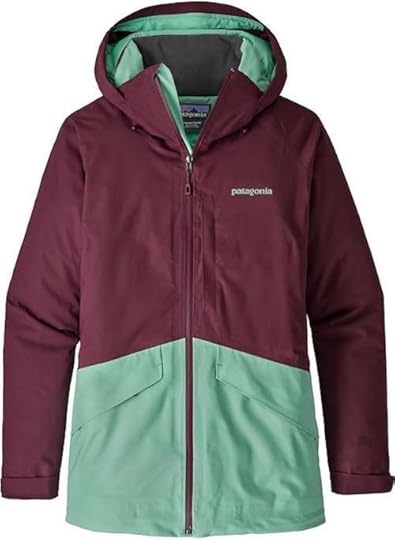
Photo: REI
You can’t ever go wrong with Patagonia. It looks amazing and lasts forever. This on-trend, two-toned Patagonia Snowbelle jacket is 30 percent off.

Photo: REI
Arc’teryx Beta SL Hybrid jackets are 30 percent off for men and women. And they’ve got bright, irresistible colors to choose from.
Big-ticket items for a song
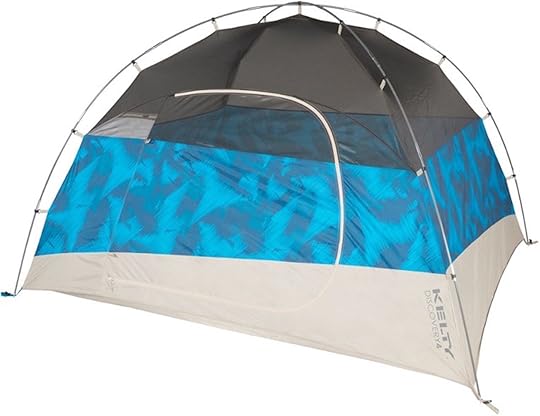
Photo: REI
You might not be thinking about camping as winter approaches, but that’s what makes this the absolute best time to get ready for next summer. There are massive markdowns — as in this $150 Kelty Discovery 4 tent for $99.99.

Photo: REI
Once you’ve got your fabulous tent, you need to sleep in it — and you won’t sleep more deeply than in a Kelty Cosmic Down sleeping bag, which is majorly discounted.
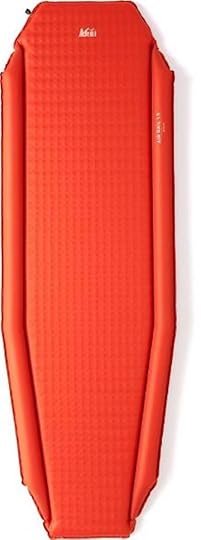
Photo: REI
Inside your fabulous tent, and underneath that sleeping bag, get comfy with a self-inflating REI Co-op Air Rail sleeping pad, which is 40 percent off right now.

Photo: REI
After your fabulous night’s sleep, you’ll be able to cook breakfast on an MSR Multi-Fuel stove. They’re all 25 percent off. 
Matador’s “What to pack” team works with top brands whose values we believe in and we scour the internet to bring you the best deals on gear. When you buy the products we’ve reviewed, we earn a small affiliate commission.

More like this: The 10 most game-changing outdoor accessories of the year
The post The best gifts for the outdoor lover in your life are on sale at REI right now appeared first on Matador Network.

Website helps world travelers barter

If you’re looking to travel back to a simpler time, Barter Week might be just the outlet you’ve been waiting for. This website is taking commerce back to the old days when people bartered with goods and services rather than money. The Barter Week program is designed to allow travelers to stay for free at various global locations in exchange for goods and services of appropriate value.
Right now, there are nearly 500 participating locations across 60 countries, from Fiji and Lithuania to the US and Peru, and accommodations range from B&Bs to hotels, hostels, nature lodges, and even old farmhouses. A full list of locations — including photos, descriptions, and barter requirements — can be found on the official website. For locations that don’t name their own barter price, or “wishes,” travelers are able to suggest their own.
Examples of some desired services include on-site repair work, photography, teaching English, video production, gardening, or painting. As part of the exchange, some locations even offer local experiences, such as archeology tours, homemade breakfasts, or live music nights.
Barter Week officially runs from November 19 to November 25 though many properties accept barters all year round. Once you’ve made your offer, the host will decide whether to accept or reject it, though there is likely room for negotiation. 
H/T: Travel & Leisure

More like this: This infographic shows 10 cheaper alternatives to the most popular cities in Europe
The post Barter your way around the world with this new website appeared first on Matador Network.

Weirdest flowers around the world

World travelers are no strangers to bright, beautiful flora. There are almost as many tourists as lavender blooms in Provence, France, come summer. Springtime sees cherry blossom festivals across Japan that draw visitors by the thousands, all eager to be showered in white and pink buds. But lesser-known flowers, although just as striking and even more intriguing, seem to elude travelers entirely. From the rainforests of South Asia to the woodlands of North America, here seven fascinating flowers that are definitely worth booking a flight to see up close.
1. Titan arum

Photo: evenfh/Shutterstock
The titan arum plant produces the most individual flowers grouped together on a stem of any species in the world. Blooms are uncommon, occurring up to 10 years apart in cultivation. When the flower does grow, however, it doesn’t stop; the record-breaking bloom in cultivation measured nearly nine feet high. But impressive size is not the only distinguishing characteristic of this strange species. It’s also a carrion flower, or corpse flower, aptly nicknamed for the extreme odor it produces. Titan arum is indigenous to Sumatra and Java, so you know what to look out for if you smell rotting flesh while trekking through the rainforests of Indonesia.
2. Rafflesia arnoldii

Photo: Anna ART/Shutterstock
This species may not look much like the titan arum, but the two have a lot in common. Both are corpse flowers, both are native to Sumatra, and both get absolutely massive. Rafflesia arnoldii takes the title of producing the largest individual flower head in the world, spanning up to three feet in diameter. It’s a rare flower and quite special to the people of Indonesia; the island nation even declared it a national flower.
3. Pitcher plant

Photo: Usanee/Shutterstock
Pitcher plants are carnivorous flowers with long, deep bodies shaped like pitchers. Also known as pitfall traps, they attract prey like flies and insects with either bright interior markings or nectar that collects in their jug-like cavities. The inside of most pitcher plants is slippery, ensuring that small critters are unable to escape once inside. Various species are found around the world, though most favor tropical areas like Southeast Asia. The largest pitcher plant species, N. attenboroughii, grows up to five feet high and a foot wide on the island of Palawan in the Philippines.
4. Lotus pods

Photo: Kazitafahnizeer/Shutterstock
Lotus flowers are delicate, stunning, and sacred in many cultures. Lotus pods look a little bit like shower heads whose holes produce seeds rather than water; oddly, they’ve become the poster child for an unusual fear known as trypophobia, a fear of clustered holes. The lotus seeds found inside the pods have been used in a number of ways around the world, most notably as a snack food everywhere from Japan to India and as a curative agent in traditional Chinese medicine.
5. Hooker’s lips flower

Photo: Wollertz/Shutterstock
It’s easy to see how Psychotria elata got its nickname. The bright red “lips” are actually bracts, modified leaves that grow before the flower matures, while the flower itself is typically white. The tropical shrub is native to the rainforests of Central and South America, though it can survive in more temperate environments. Indigenous groups in Panama and Colombia have long sought out hooker’s lips flowers for medicinal purposes, specifically to help with labored breathing. Elsewhere, it’s believed to help with ailments like earaches and sore throats.
6. Jade vine

Photo: Murrrrr-s/Shutterstock
Jade vine is famous for its striking turquoise color. A relative of the kidney bean, the vine can stretch up to 70 feet; the flower trusses, which are made up of bright, claw-like blooms, can reach lengths of 10 feet themselves. Jade vine is native to the rainforests of the Philippines and known as taybak in Tagalog, the local language. The plant is often used as decoration, most often contributing to lei-like garlands, though it’s unfortunately being threatened by deforestation.
7. Bee orchid

Photo: Andreas Zerndl/Shutterstock
A master of disguise, Ophrys apifera is nicknamed as such because, well, it looks like a bee. It’s an evolutionary tactic known as mimicry, which this species uses to attract its primary pollinator. Bees collect pollen after landing on the flower in hopes of mating and then distribute the pollen as they fly away. Bee orchids are a common sight in Europe — though, interestingly, those found in England rely on self-pollination rather than mimicry to reproduce — as well as the Middle East and North Africa. 

More like this: The 9 weirdest fruits in the world and where to try them
The post The 7 most fascinating flowers around the world you need to see in person appeared first on Matador Network.

Eat the spaghetti from "Elf"

If someone 15 years ago said that people would still be making Elf tributes in 2018, they would have been laughed at. Yet, here we are. Miss Ricky’s, a restaurant at Virgin Hotels Chicago, debuted a dessert that only Buddy the Elf could love: breakfast spaghetti.
This version is just as loaded as it is in the movie. The pasta dish is topped with Pop-Tarts, M&Ms, Fruity Pebbles, coconut, syrup, marshmallows, and strawberry, raspberry, and chocolate sauces. Yes, it’s something that only a human who thinks he’s an elf could love. And no, no one has been able to finish it, chef Moosah Reaume told MUNCHIES.
Miss Ricky’s specializes in comfort food, and nothing screams comfort like being uncomfortably full of a questionable dessert. On the restaurant’s website, the diner describes itself as a place that makes food “just like mom used to make…if mom were a cross-dressing foodie with a full sleeve tattoo.”
Breakfast spaghetti is a fitting Christmas dessert for anyone who has the heart and tastebuds of a child. While some countries have traditional Christmas desserts like rum cake in Jamaica or bûche de Noël in France, America has Will Ferrell movies. But when they come packed with advice like sticking to the four main food groups (candy, candy canes, candy corns, and syrup), can you blame us?
The bowl of immediate regret is available until Christmas day for $15. 
H/T: MUNCHIES

More like this: The most calorific desserts around the world
The post You can order the candy-coated spaghetti from “Elf” at this Chicago restaurant appeared first on Matador Network.

New lie detector tests at airports

Not carrying weapons, dangerous chemicals, or explosives onto a plane used to make airport security happy. Not any longer. Soon non-EU passengers at border checkpoints in Hungary, Latvia, and Greece will have to undergo lie detector tests, answering questions via webcam before being allowed to pass. Using artificial intelligence, the machines will analyze microexpressions to determine a passenger’s truthfulness. The beta testing of this new technology will go live later this month, though border guards will also be present just in case a security threat needs to be addressed.
Passengers considered “low-risk” will only be subjected to basic questions, like name, birthday, and cause for travel, while “high-risk” travelers may have a more intensive interrogation. The criteria for determining “high” and “low” risk travelers has not been released.
The new measure already has its critics, however. Frederike Kaltheuner, data program lead at Privacy International, told CNN Travel that the beta test is “part of a broader trend towards using opaque, and often deficient, automated systems to judge, assess, and classify people.” She added that “traditional lie detectors have a troubling history of incriminating innocent people. There is no evidence that AI is going to fix that.”
The system is only projected to have an 85 percent success rate. Indeed, research from the American Psychological Association determined that there is a large margin of error when it comes to lie detectors tests (also known as polygraphs), and “there is no evidence that any pattern of physiological reactions is unique to deception.”
In the initial beta test, the lie detectors will only be used on passengers who give their written consent. 
H/T: Travel & Leisure

More like this: The 7 most frustrating airports around the world
The post You might have to pass a lie detector test to travel to Europe appeared first on Matador Network.

China to beat France in popularity

When we think about the world’s most popular tourist destinations, Paris immediately springs to mind. The famous cuisine, iconic buildings, and rich history have made France a tourism giant for years, but that may be about to change. Unfortunately for France, a new country is about steal its thunder. According to data from the World Tourism Organization, China will be the world’s most popular destination by 2030.
Last year, France topped the list with 86.9 million travelers, followed by Spain, the US, and China. According to the report, China already leads in outbound travel, but now seems poised to overtake France when it comes to inbound tourism as well. A Euromonitor report explains China’s upward trend in tourism by attributing it to “rapidly growing economies, and an expanding middle class seeking to spend its increasing disposable income on travel.” It also states that “the gradual process of loosening visa restrictions has made traveling in the region easier.”
China’s rising position in the rankings is also largely due to intra-regional travel, with around 80 percent of China’s tourism coming from other Asian countries. Travel to the country will also be boosted by upcoming major sporting events in the region, like the 2022 Beijing Winter Olympics. 
H/T: Lonely Planet

More like this: 7 destinations to visit NOW, before they’re overrun with tourists
The post China to become the world’s most visited tourist destination by 2030 appeared first on Matador Network.

US airlines might owe you money

Southwest, Delta, United, and American Airlines are the target of a class action lawsuit, alleging that they limited seat availability on their flights to drive up ticket prices. Specifically, it claims the airlines colluded with one another to limit the number of new seats they added and raise airfare despite lower fuel costs. American Airlines has already settled for $45 million, and Southwest for $15 million — though both deny any wrongdoing — while Delta and United have yet to settle.
If you’ve flown with any of these airlines in the past seven years, don’t be surprised if you receive an email with information on the lawsuit. Depending on the direction of the lawsuits, you could be eligible to receive compensation, though the amount would likely be pretty small. To qualify for any compensation, you must have flown Southwest between July 1st, 2011, and December 20th, 2017, or with American Airlines between July 1st, 2011, and June 14th, 2018. Passengers seeking a payout must file a claim form when the claim period opens. This website has more detailed information on how to proceed.
In a statement to the Los Angeles Times, American Airlines continued to deny any illegal or deceptive behavior. “The facts show,” it said, “that American dramatically increased domestic capacity during the period covered by the complaint while taking delivery of hundreds of new aircrafts.” Similarly, a United spokesperson told NBC station WESH, “We will continue to defend ourselves against these claims, which we have always maintained are without merit.” 
H/T: Travel Pulse

More like this: 7 rights all air passengers have and should know about
The post Major US airlines might owe you money thanks to a huge lawsuit appeared first on Matador Network.

November 8, 2018
Americans should travel domestically

It’s easy to make friends in the Midwest.
Not that the concept of friendly people in the middle states is groundbreaking or anything, but it really is true. This is how I ended up hotboxing an F-150 in a Ft. Wayne parking lot outside a dive bar called the Brass Rail.
Phil, my hot-boxing host, was the bartender at a music venue I’d been to earlier in the night.
“You came all the way from Miami to FORT WAYNE?” the burly, bearded bartender said when I ordered a beer and told him I was visiting. “Don’t think I’ve ever seen someone from Miami up here.”
“I like to learn,” I said, sipping my Sun King Sunlight Cream Ale. “Where’s good to go out here on a Friday?”
“You like breweries and dive bars?” he asked, smiling from behind his thick beard. I knew I’d found my best friend for the weekend.
After the show, Phil took me to a couple of breweries where we laughed about beer, college football, music, and women. He suggested we go see a metal band at the divey Brass Rail. Before we went inside he offered me a sip of some small batch bourbon he kept in the car. It felt warm on the cold Indiana night.
“You smoke?” he asked. It was Indiana; I assumed he meant cigarettes.
“Nah, but go ahead,” I said. He reached in his center console and packed a fat green bowl into a silver pipe.
“Suit yourself,” he said, taking a hit and relaxing against his driver’s seat.
“Oh, you meant do I SMOKE!” I said. “Yeah, hand me that.”
After a few rounds of passed pipes and laughing about inane bullshit, we got out of the truck to head inside. On the way, I glanced back at his truck and squinted through the parking lot lights at the red sticker on his back bumper.
It said Make America Great Again.
This, to many people, would be where the record scratched, and my new best friend would immediately turn into the sworn enemy. I’d awkwardly get in an Uber back to my hotel and text all my friends in Seattle, New York, and San Francisco how fucked up Indiana is.
But what is the point of traveling if you don’t seek to understand another culture? And in 2018 America, if you live on the coasts, red-state middle America can sometimes feel about as foreign as Pakistan.
The best way to try and find some common ground is to actually go out and find it. Which for those of us living in blue states means traveling to the less-sexy heartland as a cultural immersion, going to the state of Georgia for the same reason you might visit the country Georgia. Because once you do, you’ll realize that while we don’t all see politics the same way, most of us agree on pretty much everything.
Being “well-traveled” doesn’t always mean leaving the country.
A common affliction of the self-proclaimed well-traveled is wanting to learn about other cultures but never educating themselves about their own country they don’t understand. I’ve been around travel writers who have passport stamp pissing contests to see who’s been to more of Central Asia but couldn’t find South Dakota on a map, then enter an echo chamber of uninformed red-state bashing.
But as one who spends as much time traveling to red states as I do to other countries, I can attest that trips to the former are more educational. And far more gratifying.
A few weeks ago, I found myself on a bus ride through Kentucky chatting with Secretary of Tourism Don Parkinson. He’s a cabinet member in a highly conservative state government, and though we didn’t talk much politics, my guess is he wasn’t part of Pantsuit Nation.
“One of our biggest problems is we have 4.5 million people in this state, and 35,000 in prison. We need to do something about that,” the Stanford-educated secretary said. “We need to find a way to get these people jobs when they get out, teach them skills in prison to make them productive so they don’t come back.”
Wait, prison reform??? Using corrections as a way to correct rather than punish? This wasn’t the “lock em up and throw away the key” red state narrative I’d seen in the 15-second clips from Trump rallies my liberal friends posted on Facebook.
Parkinson went on to explain how the state was trying to fight the opioid epidemic, discussing ways to fight addiction through mental-health policies rather than excessive punishment. It seemed, at least on this issue, the Kentucky state government saw things the same way they might in California. Had I not taken the time to go there, I’d have never understood that these states had more in common than horse racing.
I also found common ground in south-central Missouri while visiting the Wonders of Wildlife museum in Springfield. There I interviewed Bass Pro Shops founder and avid conservationist Jonny Morris, who spoke passionately about preserving the outdoors for his great-grandchildren and about the importance of untouched nature. This sounded straight out of the Sierra Club playbook, not the words of a guy who’s fishing buddies with the Bushes.
Conservationists don’t like to use the word “environmentalism” — during my 48 hours at Wonders of Wildlife I didn’t hear the word once. But I did hear a lot of things that sounded like environmentalism. Things like “land protection” and “species rehabilitation” and “preventing overdevelopment.”
Perhaps we use different words to describe the same goals, but when it comes to ensuring we have nature left to enjoy, people both left and right seem to agree. And while many on the coasts might think the middle of the country is cool with letting coal plants dump wastewater into the drinking supply in the name of the almighty dollar, travel to Springfield and you’ll see people here love the outdoors just as much those in Oregon claim to.
The problem is politicians.
The great transgender bathroom controversies of 2016 mystified those on the coasts who didn’t understand why states had to legislate lavatory use. What many on the coasts didn’t understand is that a lot of people in red states didn’t get it either.
“It’s the politicians,” Jessie Zenor, who owns Greenhouse on Porter, a biscuit and coffee shop in Ocean Springs, Mississippi, told me when I visited the state in 2016. Her state had recently proposed a law allowing anyone with a “sincerely held religious belief” to deny LGBT individuals pretty much whatever they wanted to, up to and including employment and housing. “Most of us don’t care at all, but it’s politicians trying to rile people up that do this stuff. Down here, we’re just embarrassed.”
So you mean to tell me that, aside from the inherent southern tradition of gossip, the vast majority of people in Mississippi actually don’t much care who other people sleep with? Fascinating.
And sometimes, the politicians don’t care either.
A few weeks before the midterm elections this year, I was at the Fall for Greenville festival in South Carolina.
Greenville is home of the Miracle Hill foster care group, a Methodist organization the Trump Administration is considering allowing to discriminate against non-Methodists in foster care placing. Meaning, basically, if Miracle Hill doesn’t want to place a child with a Jewish family, it doesn’t have to.
Those who don’t travel to South Carolina — outside of a bachelorette party to Charleston — might roll their eyes and groan “South Carolina,” assuming the whole state would agree with a fringe group’s discriminatory policies.
I learned differently.
Resting at a festival hospitality tent, I began discussing Thai restaurants with a silver-haired man dressed in a bright red “McMaster for Governor” t-shirt.
“You’re wearing the wrong color, there, Jason,” an event organizer with a headset teased as she joined our table. “You need to put on something blue!”
“Gotta support the right team!” he joked back smiling. The man in the red shirt was State Representative Jason Elliott, a Republican who represents part of Greenville and outlying areas.
“We love Basil Thai,” a dark-haired man sitting next to Elliot said, switching the subject back to Thai food. “It’s not far from our house and the people who run it are so friendly.”
“Basil Thai,” Elliot said turning his attention to the dark-haired man. “Yeah, we love that place, don’t we?” The other man smiled at him.
If I told anyone in San Francisco I spent my Saturday discussing Thai food with a gay couple in not-Charleston, South Carolina, they would have raised an eyebrow. If I told them that half that couple was a state representative, they’d have been surprised. If I told them he was a Republican, they’d have asked for whatever mushrooms I’d gotten there.
But this, friends, is why we travel. To learn things that go against our preconceived notions, and to learn that whatever labels we put on people are generally pretty inaccurate.
Granted, people have different experiences when they travel. Much like when women under 30 tell me, “Everyone in South Beach is so NICE!” I understand the way I’m treated may be different because of how I look. And the experience in conservative America may be different for someone who is Muslim. Or black. Or gay. But few if any people I’ve encountered in red states had anything overtly racist, sexist, or xenophobic to say. And if anything, I heard fewer negative words from them than I do from liberal friends about conservatives.
That’s why when I saw Phil the bartender was a die-hard MAGA man, I didn’t really much care. He was a cool dude who smoked me out and introduced me to a ton of also-cool people in a town where I knew no one. And that kind of hospitality is far more important than whether you voted R or D.
The Kumbaya, buy-the-world-a-Coke narrative says travel opens our minds to other cultures. But rarely do those of us living on the coasts consider that educating ourselves on the people and cultures of red state-America might be more beneficial than exploring remote villages in foreign countries.
That’s not to say Ft. Wayne is the new Bali, but in an era when people end lifelong friendships over political Facebook posts, exploring our own country is more important than ever. And maybe, just maybe, taking the time to visit the heartland will teach us we’re not so different after all. 

More like this: These 7 US cities are over. Here’s where to go instead.
The post Why coastal Americans need to take a trip to the heartland, now more than ever appeared first on Matador Network.

Matador Network's Blog
- Matador Network's profile
- 6 followers



